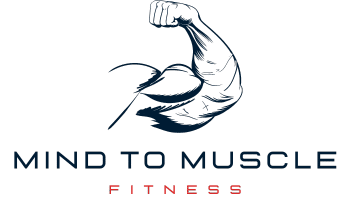
Pyramid Sets vs Straight Sets
When it comes to sculpting a chiseled physique, the question often pops up: which is more effective, pyramid training or traditional sets? Understanding the intricacies of Pyramid Sets compared to Straight Sets can make a monumental difference in your bodybuilding journey. Both methods pack a potent punch for muscle growth and strength gains, yet they diverge on strategy and implementation.
Unlocking Muscle Potential with Pyramid Training
Pyramid training is no stranger to those seeking hypertrophy heaven. It gradually escalates intensity, piling on weights as you taper down reps. This multifaceted approach challenges muscles at varying levels – a bedrock for unearthing untapped growth potential. Discover how this ascending and descending method tailors to your needs, whether you’re fresh on the gym floor or seasoned in iron combat.
The Steadfast Approach of Straight Sets
Meanwhile, straight sets keep it consistent – same weight, same reps, forging discipline and resilience rep by rep. This classic strength-training staple has fortified athletes’ regimens for decades. Reliability meets simplicity here; learn how employing an unwavering variable workload can yield solid gains and amplifies endurance.
In both pyramidal climbs and linear lifting paths, muscle adaptation leads to incredible transformation. Exploring these strategies provides insights into optimizing workouts for persistent progress. Elevate your routine while embracing the intricate dance between progressive loading and steadfast repetition.
Let’s delve deeper into these paradigms of power – learning from experts who have dissected their utility in real-world applications across all skill levels. You’ll absorb not just theories but tactics; pragmatic tips that translate to tangible results.
Whether modifying load sequences or locking into unchanging set structures, each approach ushers in its unique spectrum of benefits. Weight warriors find solace in understanding that no one-size-fits-all exists here — this dual narrative serves everyone’s script for triumph over physical plateaus.
In conclusion, flipping the switch between pyramid schemes and straight shots can inject novelty into routines grown weary—this pivot points toward breakthroughs that every dedicated lifter hunts vehemently. So why not recalibrate your workout compass today? The path veering towards mightier muscles awaits your footsteps.
Essential Facts on Pyramid Sets vs Straight Sets
Pyramid sets involve progressive overload, increasing weight with each set. Straight sets maintain consistent weight and reps. Pyramid sets enhance strength and endurance. Straight sets focus on muscle fatigue and stamina. Pyramid sets start with lighter weights, straight sets do not.
Benefits and Advantages of Pyramid Sets
- Dynamic Warm-up: Gradually heavier weights prepare muscles and joints.
- Strength Gains: Increases maximal strength due to heavier loads.
- Plateau Breaker: Varied weight and rep ranges stimulate growth.
Benefits and Advantages of Straight Sets
- Consistency: Same weight and reps enhance technique.
- Time Efficiency: Less setup time between sets.
- Endurance: Repetition at constant weight improves muscle stamina.
Pros and Cons of Pyramid Sets
Pros:
- Adaptability: Suits various goals like hypertrophy or strength.
- Intensity: Peaks towards heavier sets for maximum effort.
Cons:
- Time Consuming: Longer rest periods between changing weights.
- Complexity: Requires planning and adjusting weights.
Pros and Cons of Straight Sets
Pros:
- Focus: Target specific muscle groups effectively.
- Clarity: Simple to track progress with fixed variables.
Cons:
- Monotony: Repetitive nature may lead to boredom.
- Limited Strength Gains: Less stimulus for maximal strength development.
Pyramid Sets and Straight Sets Explained
Pyramid sets gradually increase in weight and decrease in repetitions. They improve strength and muscle endurance. Straight sets keep weight and reps consistent and aid in mastering form and building muscular stamina.
A workout plan incorporating both methods can optimize muscle growth and performance gains.
Workout Plan Structure
| Exercise | Set Type | Sets | Reps | Weight | Rest |
|---|---|---|---|---|---|
| Bench Press | Pyramid | 4 | 12/10/8/6 | Incremental | 90 secs |
| Squats | Pyramid | 4 | 12/10/8/6 | Incremental | 90 secs |
| Deadlifts | Straight | 4 | 8 | Consistent | 120 secs |
| Pull-Ups | Straight | 3 | 10 | Bodyweight | 60 secs |
Increase the weight after each Pyramid set while reducing reps. Keep Straight set weights unchanged. This approach allows you to progressively challenge your muscles while maintaining consistency in your straight sets to focus on form and endurance. Be mindful of your body’s signals during the workout and make adjustments if needed to avoid strain or injury. For additional guidance on proper form and technique, especially for complex exercises, consult kettlebell swing pain tips to ensure you’re moving safely and efficiently throughout your routine.
Mistakes to Avoid in Sets
- Rushing Through Reps: Allow full muscle contraction and extension.
- Improper Weight Selection: Choose weights that challenge but don’t compromise form.
- Inconsistent Rest Periods: Follow planned rest intervals for recovery and performance.
“Pyramid sets pushed my strength limits,” a fellow bodybuilder shared. “Straight sets perfected my technique.”
How Do I Combine Pyramid and Straight Sets Effectively?
- Begin with Pyramid sets for compound movements to build strength.
- Transition to Straight sets for isolation exercises for muscle definition.
- Adjust the Pyramid sets’ intensity by increasing weights gradually.
- Ensure Straight sets are executed with a focus on form and contraction.
Advanced Techniques in Resistance Training: Pyramid vs Traditional Sets
Pyramid training involves increasing or decreasing weight with each set. Ascending pyramids ramp up intensity. Descending pyramids begin heavy, then lighten the load. Traditional straight sets maintain a static weight through all sets. Advanced lifters manipulate these for muscle gains and endurance. Pyramid training can mean hitting failure at varied rep ranges. Traditional sets focus on consistent rep targets.
Customizing Workout Structures: Tailoring Pyramids and Straight Sets
To achieve hypertrophy, strength, or muscular endurance, tailor these patterns. Customize ascending pyramids for raw strength, targeting lower reps with heavier weights. Opt for descending sequences to exhaust muscles post-strength work. While, straight sets prioritize endurance or strength maintenance at a stable load. Mix rep ranges or adjust rest periods to fine-tune your program.
Integrating Diverse Training Protocols: Synergizing Workouts
Merge pyramid schemes or straight sequences with supersets, drop sets, or giant sets. This cultivates functional strength or muscle mass. Implementing pyramid principles with compound lifts and straight sets for isolation moves can optimize a session. The approach ensures comprehensive muscle stimulus.
Nutritional Strategies for Optimal Results: Fueling Variation
Effective training demands tailored nutrition. For pyramid or straight set routines, prioritize protein for recovery. Carbs fuel intense sessions. Healthy fats support hormone functions. The correct balance aids recovery, promoting growth post-workout.
Expert Perspectives: Advice from Seasoned Lifters
“Change is crucial for progress,” states a renowned trainer. Embrace both pyramid and straight set methods to ‘shock’ muscles, stimulating adaptation and growth. A mix challenges the body differently each session, advocating continual progress.
Periodization and Planning: Strategizing for Long-Term Gains
Incorporate periodization into your training calendar. Rotate pyramid phases with straight set blocks. This strategic shift in your regimen keeps muscles guessing. It helps prevent plateaus and overtraining while fostering sustained improvement over time.
Monitoring Progress: The Importance of Keeping Records
Track sets, reps, and weights. Use logs to monitor pyramid and traditional set performance. Adaptations require informed decisions based on data. This approach ensures workouts align with goals and benchmarks success accurately.
With a focus on precision training techniques, tailored programming, and strategic nutrition, enthusiasts can maximize the effectiveness of their workouts through varied resistance patterns. Incorporating expert advice while maintaining detailed tracking fosters long-term development and peak physical performance.
What are Pyramid Sets?
Pyramid sets involve gradually increasing weight with each set while reducing the number of reps. They effectively warm up muscles and build both strength and endurance.
What are Straight Sets?
Straight sets maintain a consistent weight and number of reps across all sets. Ideal for focused strength building, they offer simplicity and the ability to push limits on a specific weight.
Can Beginners Utilize Pyramid Training?
Absolutely, beginners can start with lighter weights and fewer steps in their pyramid. It’s an excellent way to learn proper form and progressively overload muscles.
Are Straight Sets Better for Advanced Lifters?
Not necessarily. Advanced lifters benefit from both methods; straight sets for targeting specific muscle groups and pyramiding for varied stimulus and overcoming plateaus.
Is One Method Faster for Gaining Muscle?
Both methods can lead to muscle gains, with pyramid training offering variety and progressive overload, while straight sets allow for high-intensity, concentrated effort.
How Often Should I Do Pyramid Sets?
Incorporate pyramid training 1-2 times a week, ensuring proper recovery, especially as the intensity and weights increase with each session.
Will I Burn More Calories Doing Pyramid Sets or Straight Sets?
Pyramid sets can burn more calories due to the volume and variety of exercises, while straight sets focus on intensity and longer rest for power.
Which Method Helps Increase Strength Faster?
Focused effort on straight sets can rapidly increase strength as it allows for consistent maximal lifting, while pyramid sets build strength progressively.
How Do I Choose Between Pyramid and Straight Sets?
Analyze your goals, current fitness level, and preferences. Mix and match both methods to challenge your body and prevent boredom.
Can These Methods Be Combined In A Workout?
Yes, you can start with pyramid sets to build up intensity and then finish with straight sets to max out a particular exercise.
Conclusion
In conclusion, pyramid schemes offer escalating challenges, excellent for warming up and progressively overloading muscles. They accommodate a variety of intensity shifts within one workout.
Conversely, uniform sets maintain a staunch focus, perfect for pushing your limits on a specific weight. Both regimens, albeit different in approach, substantially elevate strength and endurance.
Integrate both into your regimen for a dynamic, robust workout strategy. Gear up, stay motivated, and push forward towards your ultimate physique with either pyramid or uniform sets as your steadfast ally in the gym.



